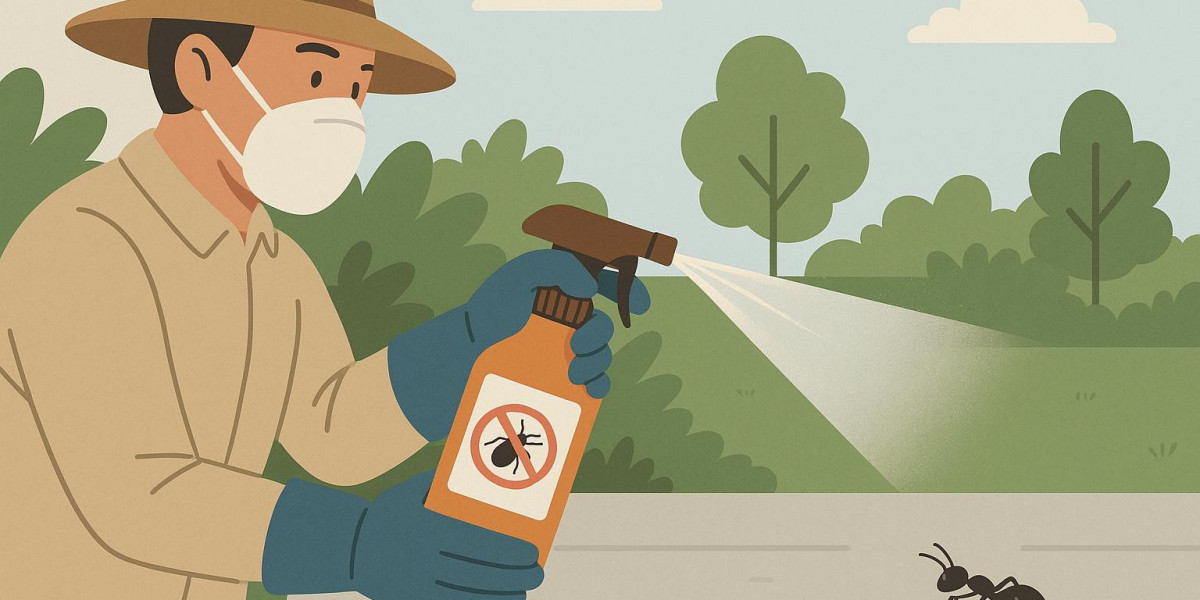In the age of climate consciousness, the demand for eco-friendly agricultural inputs is reshaping the way we grow food. Among the most debated are pesticides. What exactly makes a pesticide "eco-friendly"? It's more than just a green label or a natural-sounding name. A truly eco-friendly pesticide must protect crops without compromising environmental integrity, human health, or biodiversity.
This comprehensive guide explores the science, standards, and sustainability factors that define eco-friendly pesticides. It also breaks down misconceptions, highlights effective alternatives, and offers practical insights into adopting safer crop protection strategies.
What Are Eco-Friendly Pesticides?
Eco-friendly pesticides are pest control solutions that minimise harm to non-target organisms, reduce chemical residues, and preserve ecological balance. These products typically break down quickly in the environment and do not persist in soil or water systems.
Qualities of eco-friendly pesticides include:
Low toxicity to humans and animals
Minimal environmental persistence
Target-specific mechanisms
Biodegradability without harmful byproducts
True eco-friendliness also includes production practices. Products derived from renewable resources, produced with minimal energy input, and packaged sustainably are more likely to meet the full eco-standard.
What Ingredients Define Their Safety?
The composition of a pesticide determines its impact. Eco-friendly pesticides use active ingredients sourced from microbes, plants, minerals, or naturally occurring biochemicals. These ingredients are carefully selected to minimize their effects on ecosystems.
Common components include:
Azadirachtin from neem seed: Inhibits insect feeding and reproduction
Bacillus thuringiensis (Bt): Targets caterpillar larvae
Diatomaceous earth: Physically damages pest exoskeletons
Sulfur and copper (in limited, regulated quantities): Control fungal pathogens
Unlike broad-spectrum synthetic chemicals, these ingredients offer precision, lower environmental risk, and degradation. Many are certified for organic farming and used in integrated pest management (IPM) systems.
Farmers seeking verified alternatives often purchase bio-pesticides remedies that comply with organic and sustainability standards, especially those tested for field efficacy under local conditions.
How Do Eco-Friendly Pesticides Work?
Mechanism matters. The way a pesticide acts on a pest affects both its environmental profile and resistance development. Eco-friendly pesticides use modes of action that are:
Specific to pests
Less likely to harm beneficial species
Aligned with biological life cycles
They may:
Block hormone signals necessary for insect development
Introduce viruses or fungi that infect specific pests
Interfere with cell membranes of soft-bodied insects
For example, Beauveria bassiana infects insects through their outer shell, reproduces within them, and kills them from the inside, without harming surrounding organisms. Spinosad, derived from Saccharopolyspora spinosa, affects insect neurons but is non-toxic to mammals and birds.
Are Certification Labels Reliable?
Certification plays a key role in identifying trustworthy products. Labels like USDA Organic, OMRI Listed, or EU Organic indicate that a product meets specific environmental and health standards. However, eco-friendly status should not rely solely on labels. Understanding the active ingredients and application guidelines is essential.
Certifications often verify:
Ingredients are non-synthetic or naturally derived
Products meet residue thresholds for safety
No long-term bioaccumulation in the ecosystem
Many farmers also cross-check pesticide information with EPA’s biopesticides index or EU pesticide database for transparency and compliance.
What Impact Do Eco-Friendly Pesticides Have on Biodiversity?
Conventional pesticides can devastate populations of beneficial insects, including bees, ladybugs, and parasitic wasps. Eco-friendly pesticides support biodiversity by reducing these non-target effects. Their selective mechanisms mitigate collateral damage.
Impacts include:
Supporting pollinators during critical bloom phases
Enabling predator-prey relationships in pest suppression
Reducing soil microbial disruption
A 2022 field study from Brazil found that farms using microbial pesticides experienced a 28% increase in native pollinator visits compared to farms treated with chemicals.
"The health of soil, plant, animal, and man is one and indivisible." – Sir Albert Howard
How Long Do Eco-Friendly Pesticides Last?
One of the main concerns is the duration of the residue. Eco-friendly pesticides often decompose within a matter of hours to days, depending on microbial activity, moisture, and sunlight. This quick breakdown decreases long-term environmental buildup and pollution hazards.
Typical half-lives:
Bt: 3–10 days under field conditions
Neem oil: Less than 24 hours under direct sunlight
B. bassiana: Active for up to 7 days in high humidity
Though short-lived, their effectiveness is preserved with repeated, well-timed applications. Unlike synthetic chemicals that persist and leach into waterways, eco-pesticides are less likely to enter groundwater or bioaccumulate.
Can These Pesticides Be Used at Any Growth Stage?
The majority of environmentally friendly insecticides have a low pre-harvest interval (PHI) and can be applied at any stage of plant growth. Crops with zero-day PHI can be harvested immediately after application without endangering consumer health.
Common safe-use examples:
Neem oil for early aphid control on seedlings
Bt spray during flowering without harming bees
Diatomaceous earth post-harvest to prevent storage pests
Always refer to product guidelines. Using bio pesticides early helps prevent outbreaks, reducing the need for harsher chemicals later in the season.
What Are the Trade-offs?
There are drawbacks to eco-friendly insecticides. Their specificity necessitates accurate pest identification and timely application. They may be more expensive than traditional alternatives and tend to deteriorate more quickly.
Challenges include:
Shorter residual activity
Sensitivity to temperature, UV, and humidity
Need for precise pest identification
However, these trade-offs are offset by long-term gains in soil fertility, ecosystem health, and regulatory compliance. Sustainable farming isn’t about quick fixes but creating lasting resilience.
Are They Cost-Effective?
By maintaining natural pest control agents and enhancing crop health, certain eco-pesticides can lower future costs, even though their initial prices are higher. Additionally, they avoid penalties for chemical residue, particularly in export markets.
Cost benefits:
Fewer inputs needed over time due to ecosystem support
Lower healthcare and worker safety risks
Access to premium pricing for organic and clean-label produce
A Rodale Institute case study found that organic systems using eco-pesticides had 28% higher net profits per acre compared to conventional systems after five years.
FAQs
Do eco-friendly pesticides work as fast as synthetic ones?
Generally, no. Most act slower but remain effective with correct timing and consistent use.Are these pesticides harmful to pets or children?
Most are low-toxicity or non-toxic to humans and animals. Always follow label directions for safe use.Can I make eco-friendly pesticides at home?
Some plant-based sprays like garlic or chili infusions, can deter pests, but commercial eco-pesticides offer standardised, tested solutions.Do eco-pesticides have a shelf life?
Yes. Microbial products, in particular, need refrigeration or cool storage to maintain viability.Are eco-pesticides suitable for all types of farming?
Yes, from urban gardens to commercial farms, they can be integrated into any scale with proper planning.
What Signals a Shift Toward True Eco-Conscious Farming?
Organic labels are no longer the only indicator of sustainable agriculture. The next steps are to achieve functional biodiversity and nutrient-dense production through ecological alignment. Eco-friendly pesticides are a part of this evolution, but real impact comes from combining them with soil health, crop rotation, and biological allies.
Systemic health, or how one input impacts the entire web of life in the field, is something that both farmers and consumers are becoming increasingly conscious of. This change necessitates more research, testing, and faith in the natural defence mechanisms.
The question is no longer whether to adopt eco-friendly pesticides, but how to design systems where they’re just one tool in a regenerative strategy that restores rather than exploits.








